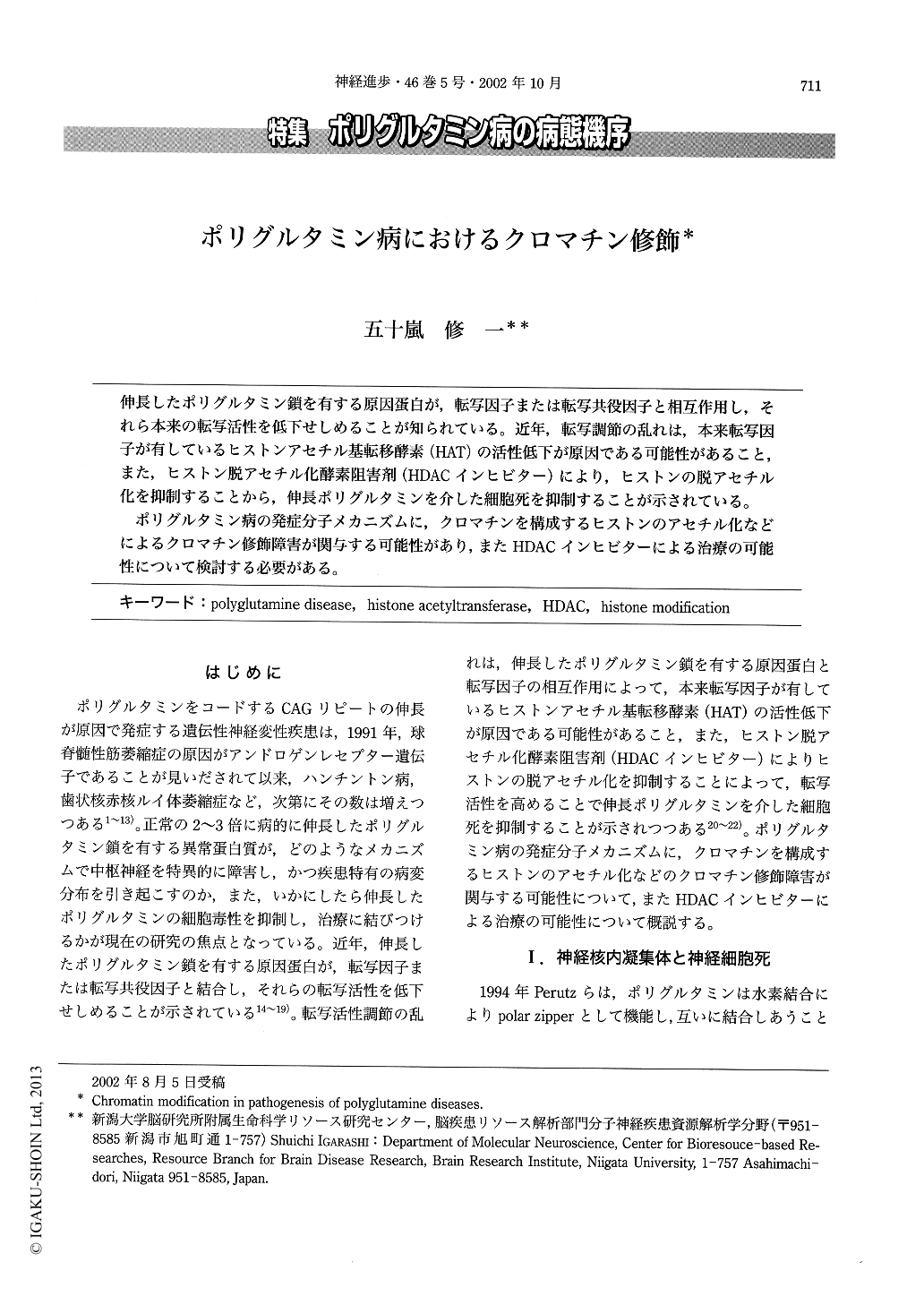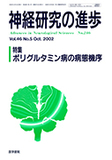Japanese
English
- 有料閲覧
- Abstract 文献概要
- 1ページ目 Look Inside
伸長したポリグルタミン鎖を有する原因蛋白が,転写因子または転写共役因子と相互作用し,それら本来の転写活性を低下せしめることが知られている。近年,転写調節の乱れは,本来転写因子が有しているヒストンアセチル基転移酵素(HAT)の活性低下が原因である可能性があること,また,ヒストン脱アセチル化酵素阻害剤(HDACインヒビター)により,ヒストンの脱アセチル化を抑制することから,伸長ポリグルタミンを介した細胞死を抑制することが示されている。
ポリグルタミン病の発症分子メカニズムに,クロマチンを構成するヒストンのアセチル化などによるクロマチン修飾障害が関与する可能性があり,またHDACインヒビターによる治療の可能性について検討する必要がある。
Transcriptional dysregulation in neurons could be one of the major mechanisms by which mutant expanded polyglutamine causes neuronal dysfunction and cell death. Transcription factors and cofactors such as CBP and TAFII130 are incorporated into aggregates containing expanded polyglutamine following the accumulation of expanded polyglutamine stretches. An inappropriate interaction between expanded polyglutamine and histone acetyltransferase has been reported to cause abnormal histone acetylation resulting in abnormal transcriptional regulation.

Copyright © 2002, Igaku-Shoin Ltd. All rights reserved.


